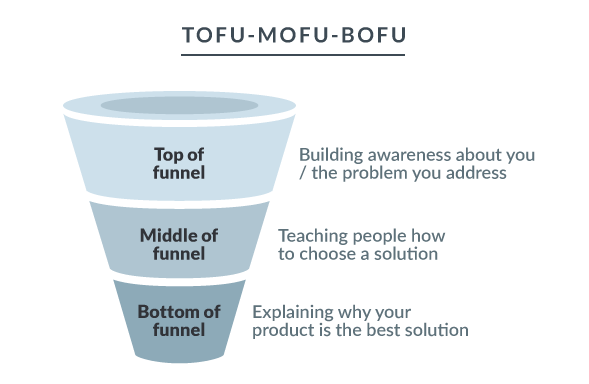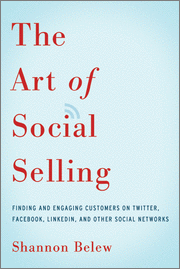How to Build a Simple but Powerful Marketing Funnel
This page may contain links to Amazon.com or other sites from which I may receive commission on purchases you make after clicking on such links. Read my full Disclosure Policy

I am pleased to welcome back Growth Marketing Strategist Margo Ovsiienko, who has previously written a number of guest posts for Your Organizing Business. This week I asked her to focus on getting started with marketing funnels, which is one of her specialties. I learned a lot from her article, and I think you will too!

Having customers who order your services with no questions asked every day is an ideal situation for every organizer business. But the reality is different.
That’s because some of your future customers don’t always know exactly what they want to achieve. Others have just learned they need help from an organizer, but don’t know how to choose the best one.
The bottom line — your leads are at different stages of their buyer journey, and you have to use different techniques to nurture them into sales. That’s exactly what a sales funnel helps you achieve at scale.
So what is a sales funnel and how do you build a simple one without extensive experience in the marketing and sales domains? We will walk you through the process in this article.
Sales Funnel — Definition
The sales funnel is a visualization of your customer journey — from the awareness stage to purchase. In a sales funnel, more leads enter the top of the funnel than end up at the bottom.

Every sales funnel includes at least three main stages — top, middle, and bottom of the funnel.
The Marketing Funnel Stages
Let’s start with reviewing the key stages of a sales funnel before you move to build one.
Top of the Funnel (TOFU)
To understand how the top of funnel content works, imagine a starting organizer who doesn’t have any customers yet. To get the first client, they have to let future clients know their business exists — they can use paid ads or reach out to potential clients directly.
The same applies to organizers who have recurring projects but want to get more new ones. Top-of-the-funnel content helps both types of organizers reach wider audiences by raising awareness about their brands and making their business visible online.
To reach more people who can become your clients, you can use various tactics and content types.
Examples of Top of the Funnel Content
Let’s review a few examples of content that you can add to your sales funnel at this stage to make your business visible online and attract new leads.
1. Search Engine Optimization (SEO)
A good SEO strategy helps you appear on the top of the search engine results and get more people to visit your website. With SEO, you don’t have to invest in ads as people end up finding you online.
To build an SEO strategy, start with choosing the keywords that can attract the right audience. For example, you can pick these for a starter — “how to organize office space” or “how to sort out your attic.”
Once you have brainstormed some keyword ideas, check if people search them frequently. You can use various keyword research tools to evaluate keyword popularity — Ahrefs or Semrush are just a couple worth mentioning.
Once you have defined your keywords, write articles that relate to those keywords and answer popular questions people have when typing them online.
2. Paid Ads
Becoming successful with SEO takes time and effort. To fill your sales funnel with new leads fast, you can use paid channels such as Google Ads or Facebook Ads.
Paid ads are often used to attract new visitors to a website and get them to take certain actions — signing up for an ebook, a webinar, or a free trial.
The key to success with setting up ads is the right targeting. Make sure you know your customer profile well in terms of their demographics and interests before you start setting up ads.
3. Outreach Email
Outreach email can become an effective tactic to fill in your funnel if you want to target businesses and professionals.
By sending an outreach email, you can explain what value you can provide and support your words with case studies or user testimonials.
Creating a successful email outreach strategy starts with preparing high-quality email lists. Ideally, you’d collect email addresses by doing research on your own and verifying each email.
If you want to streamline the email list building process, you can consider using email lists. However, you’d have to be extra careful when it comes to using them. They could damage your reputation and email deliverability. Also note that in some countries and states it is illegal to send commercial email with no consent from the recipient.
If you still decide to proceed with email lists, make sure that you acquire them from a trusted provider. Some industries are more favorable for this practice than others.
For example, there are services that pull official data from various resources to compile a list of verified email addresses relevant to your niche. Check out this healthcare marketing list to get an idea of what a reliable email source should look like.
Whenever you choose to go the easy way of using an email list, send the emails from your own email and avoid using email marketing services. Automated campaigns can increase your chances of unsuccessful and even damaging results.
Once you have email lists ready, you can then begin to write effective email copy and choose an email outreach tool to send your first campaign.
4. Social Media
Many organizers find their customers and leads on social media, where they can apply the latest trends to their suggestions, stories, or videos and start to cultivate relationships with comments and private messages.
If your business is focused on clients you see on one or two social media channels, then continue your efforts there. Make sure you measure, monitor, and find ways to anticipate your potential customer’s needs, and give them an easy call-to-action.
Remember, most social media followers engage via their phones, so make sure your funnel-related activities are mobile-friendly, and stay alert for the latest Facebook, TikTok, and Instagram marketing tips.
Middle of the Funnel (MOFU)
Once you have brought some traffic to your website, it’s time to convert it into leads, so you can continue nurturing your prospects even after they leave your website.
But first, you have to collect their email addresses. You can get people to fill in email forms by providing some value in return and offering a free downloadable resource.
So what free resources should you offer at this stage? Let’s have a look.
Examples of Middle of the Funnel Content
You can use different content types at the MOFU stage of your funnel. Here, we have listed three ideas for you to start with.
1. Ebook
You can offer a free ebook containing tips for helping your website visitors organize their homes or offices better. To get the topic ideas for your first ebook, you should start by brainstorming the critical problems your customers have.
Next, you can pick the one you believe would appeal to the majority of your website visitors and get down to outlining the ebook structure.
You can also end up choosing a few ebook topics and offer this downloadable resource to different persona types. For example, you can create two ebooks — one aimed at businesses and the other aimed at individual personas.
2. Email Marketing
Email marketing is a powerful channel for lead nurturing. That’s because it helps reach your audience with a personalized message when they are the most receptive to it and are more likely to take action.
Both newsletters and triggered emails can be effective at explaining to people the value you can bring as an organizer. Let’s check what both mean and how you can use them at this stage of the funnel.
Imagine your website visitor has left you an email to download one of your free resources such as an ebook. After your email marketing tool records an email address in the system, you can send an automated campaign with many other free materials and a call to action encouraging them to book a free consultation with you.
You can have regular one-off campaigns every week — think of it as a newsletter or a weekly digest.
Triggered emails work differently — to receive an email, your website visitor should take a specific action. For example, if one of your leads has opened your weekly digest at least 5 times, you can send a triggered email that encourages booking a free call with you or get a free project estimate.
To create both types of emails — weekly campaigns and triggered emails, you can use email templates for business.
3. Webinar
Webinars are another tool you can use to nurture leads into sales. You can organize webinars both as scheduled sessions and as pre-recorded versions in the form of a free lead magnet.
To promote your webinars, you can send emails to your subscribers or use paid ads. When drafting a promotion campaign, make sure you also create a separate landing page where people can register for your online event.
Live stream via a professional live streaming solution such as OneStream Live to avoid technical issues and ensure the high quality of your webinars.
Bottom of the Funnel (BOFU)
The bottom of the funnel stage is the one where you attempt to land a sale. Your leads already know that they should use organizer services to bring more order to their personal and professional lives. They might be actively searching for an organizer who they can start working with right now.
For you, it’s time to show how you stand out among other organizers, build more trust with your prospects, and offer content that would help them make their final decision.
Examples of Top of the Funnel Content
Let’s check what content serves your conversion goals at this stage the best.
1. Free Consultation
Free consultations are a great way to establish trust with your leads, understand their challenges, and present them with the offer. You can organize consultations in the form of a video call or a traditional phone call.
But remember that free consultations can take a lot of time. That’s why you have to be thoughtful about whom you give access to your online calendar. Normally, only hot leads should be invited for a free consultation.
At this stage of a sales funnel, a free consultation is also a sales call. Offering sales calls to cold leads — your first-time website visitors — can quickly kill their interest in your brand as they know little to no about your expertise and experience.
2. Case Studies and Testimonials
Case studies and testimonials are a great way to show your expertise by showing your past projects. This content type is focused on presenting your work unbiasedly as it’s not you, but your clients express their opinion about your work.
To collect testimonials in an easy way, make sure you always ask your clients to write a few lines explaining challenges they had before starting working with you, proposed solutions, and the results they have managed to achieve with your help.
How to Build a Simple Sales Funnel
Now, you have a clear idea about the funnel stages, tactics, and content types used to build a sales funnel. Let’s see how to use this knowledge to create a simple funnel within a day or two.
1. Plan and create content
Make sure you start with a solid plan for the content you want to create. Write down content ideas for each stage of the funnel. Next, prioritize what content you want to create first. Approach the content creation phase as a project manager — make sure you set up deadlines for each content piece and have a clear idea about execution.
2. Choose the right tools
You will have to use specific tools to implement some tactics we have mentioned. For example, to set your first email campaign, you have to pick some email marketing services that would fit your budget. To create your first ad campaign, you need to make yourself familiar with an ad manager and choose a tool to create professional graphics.
Choosing your tool stack is an important step because once you start using the chosen software, it would take a lot of time and effort in the future to substitute it with another one.
3. Connect the stages
Once you have prepared the content for your sales funnel, it’s time to connect the dots between your funnel stages. By connecting your funnel stages, you can make sure that your leads have a smooth transition from one stage to another. For example, to get your webinar attendees to sign up for a free consultation, you can add a call to action for a sign-up in the post-webinar email sequence.
4. Measure the results
To make sure your funnel works, you have to measure its performance. Start with tracking the number of people who enter different stages of your funnel — e.g. website visitors, webinar attendees, and a number of sales. If you notice that most leads get stuck at some stage in the funnel, you can work out a plan to optimize campaigns for high conversion.
Final words
You don’t need years of experience in marketing to create a simple sales funnel for your organizer business. Understanding the idea behind a sales funnel and how different content types help lead to sales will help you create a funnel that works.
Featured image by lightsource / DepositPhotos




I can see I mostly focus on the bottom of the funnel. This is a helpful overview of the various marketing stages. Thanks for sharing!
I think many of us tend to focus on one particular stage. I’ve always had trouble wrapping my head around these concepts, so I was really pleased that Margo agreed to cover this topic and that she did such an amazing job of it!
Indeed she did!
Thank you for the prompt to better connect the three levels. I am going to dive into Mailchimp’s “trigger email” functionality.
That’s a really useful feature! So instead of someone receiving an email everyday for a week, not reading them right away, and deleting them because there are too many, you can set it up so email #2 doesn’t go out until/unless they open #1, and so on.
This is an excellent explanation about the sales funnel. I’ve heard the term, but never understood it in quite this way. I do many of these things, but it’s useful to see it in a bigger ‘road map’ conceptual way. Also, it’s useful to identify areas for improvement. Very helpful.
I’m glad you liked it too!
As a small business owner that works with other businesses, it is essential to do all of these sections in the marketing funnel. Thanks for sharing this thorough post. I’m going to share it!
Much appreciated, Sabrina!
I do a little bit at each level, but certainly not enough. I love some parts of marketing — particularly content creation — but still stay in my comfort zone after twenty years. I know the marketing funnel, but really appreciate it being laid out like this. And that trigger email is an intriguing approach!
I’ve heard about it many times, but it’s never been explained so clearly. Kudos to Margo!
What a great wealth of resources and knowledge here. Definitely one to save a read again every once in a while as a reminder to look at the big picture.
It’s easy to get lost in the details, isn’t it? Or to try and create content that will appeal to too broad an audience. Lots to think about!
Great post! I really appreciated the clear steps and practical advice you shared on building an effective marketing funnel.